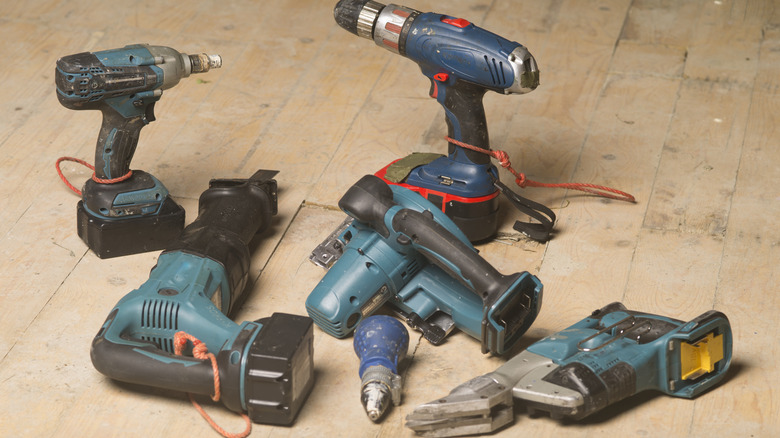What Does FLO Mean On A Tool Battery Charger?
When working with power tools, it's not surprising if you come across a few confusing symbols, especially if they vary between manufacturers. Whether it's the different colors of still or flashing lights or the abbreviations, these don't immediately make sense. Because of this, you may catch yourself checking what they mean every now and then, like when you come across the word "FLO." In general, a "FLO" symbol on power tool chargers means that a device is charging in a floating state. "FLO" or float mode acts like a maintenance charge at a low voltage, which replenishes the battery at the same rate. Typically, it's a useful feature for making sure tools don't get discharged, while also having the mechanisms in place to prevent overcharging. In both ways, it works to improve the tool battery's overall lifespan, which is why it's also sometimes referred to as "maintenance mode."
Apart from tools, other types of batteries that benefit from float mode are those that tend to go unused for long periods. For example, we've mentioned before how it's a useful feature that is present in the Ryobi 6V/12V 2 Amp Battery Charger and Maintainer, which you can use to make sure your vehicle battery stays working after months of storage. Aside from Ryobi ONE+ chargers, other power tool charging systems that utilize this technology include the DeWalt chargers, Makita battery chargers, Milwaukee chargers, EGO Power+ chargers, and Bosch chargers.
Keeping your power tool batteries healthy
While there are safety mechanisms in your power tools, like the FLO or maintenance setting, the reality is that taking care of your power tools and their batteries require multiple approaches. Some of the mistakes that people usually tend to make that are ruining their power tool batteries include exposing them to extreme temperatures, getting them wet, storing them improperly, and using fake or third-party chargers. In some cases, third-party chargers may work. However, they probably weren't tested to the same degree of compatibility or optimized the way that official chargers are, nor are they as accountable if anything goes wrong. Because of this, they carry some safety risks that may not be worth taking. Not to mention, many power tool brands will void their product warranty if they learn that you've charged the device with anything other than the official charger.
To learn more precise details about the best way to care for your particular tool's battery system, consult the official manual. Each battery will have its own safe operating temperature and storage temperature. In addition, the manual can tell you what the other words and symbols on your tool charger mean. And of course, you might even learn oddly specific but entertaining things about them, like how to change the tone they make when they're done charging.

